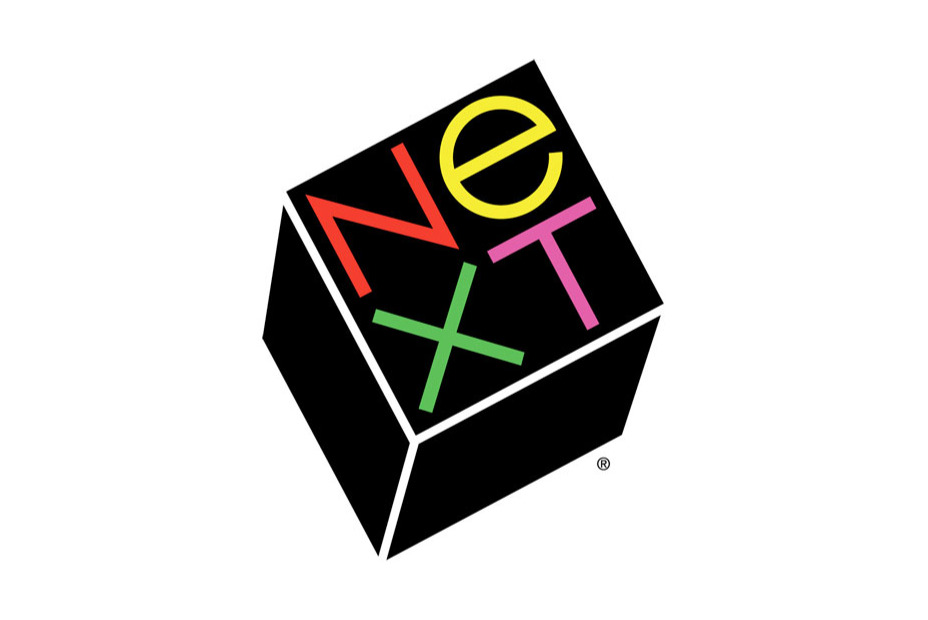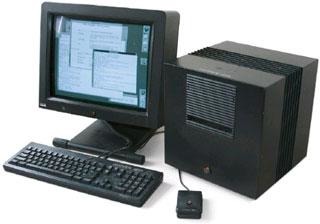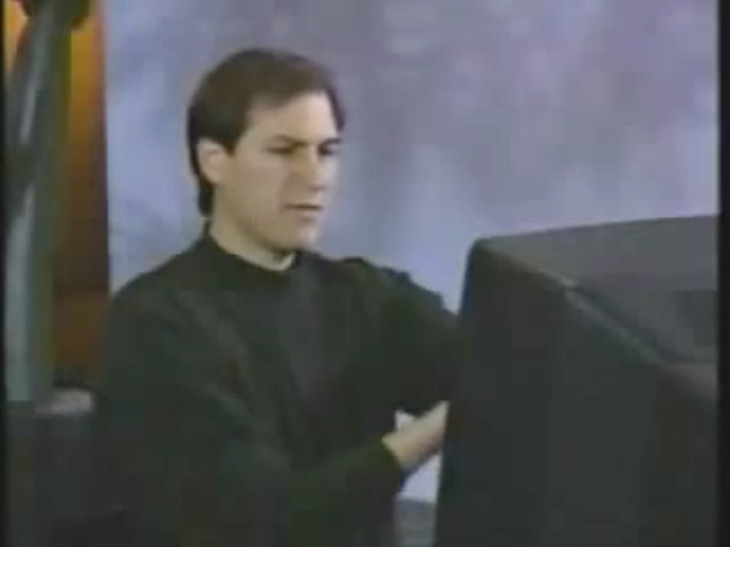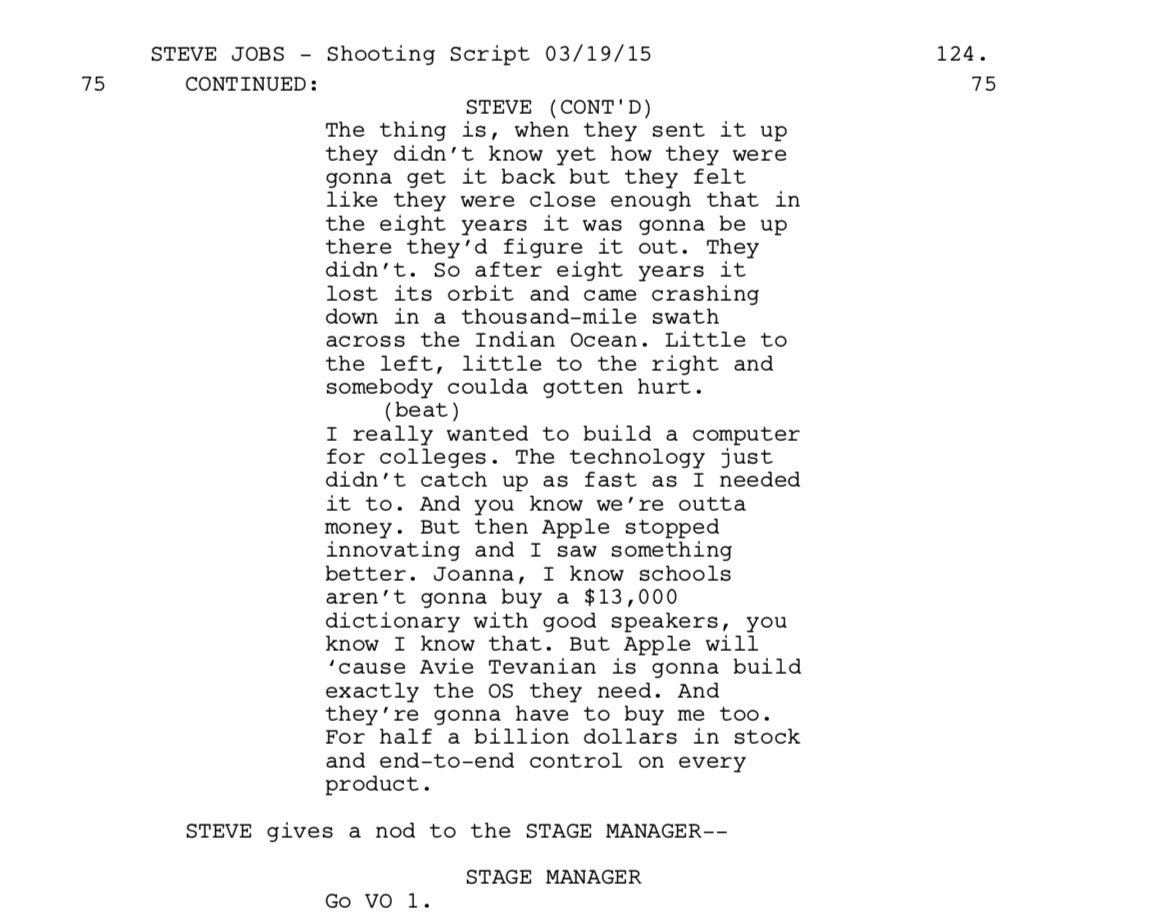It seems little went right for NeXT and certainly nothing remains of this once promising company — except that it is the reason Apple survives and it's how the web began. AppleInsider on the peculiar story of the company Steve Jobs formed after leaving Apple on September 12, 1985.
For a company that changed the world — no exaggeration — it is surprisingly hard to pin down a date for when NeXT Computer began. However, the very first time Steve Jobs announced the company in any official way was on September 12, 1985.
It would be at least days before it had a name, weeks before it had premises other than Jobs's home and months before it was incorporated. However, September 12, 1985 was the day Jobs told Apple's board of directors about it. He specifically told them that he was going to take a few employees and start a firm to make computers for higher education. According to the book Apple Confidential 2.0, he played it all down and even described those Apple employees as "low level" ones.
Apple meetings reportedly started at 7:30am in those days and at the one on the morning of Friday September 13, 1985, Jobs then listed the people he was taking. Rich Page, Bud Tribble, Susan Barnes, Dan'l Lewin and George Crow were far from low-level staffers. Between them they were senior controllers, engineering managers and marketing people.
Not only were they important at Apple but they were inextricably involved with every detail of the company — and yet here was Steve Jobs, extricating them.
The end of Steve Jobs at Apple
After Jobs presented his list of the people he was going to take away with him to a new company, CEO John Sculley discussed removing Jobs as Apple chairman. That sounds asinine as Jobs had reportedly made clear he was leaving but in a formal letter Jobs recounted what had happened.
"This morning's papers carried suggestions that Apple is considering removing me as chairman. I don't know the source of these reports, but they are both misleading to the public and unfair to me. You will recall that at last Thursday's Board meeting I stated I had decided to start a new venture, and I tendered my resignation as chairman. The Board declined to accept my resignation and asked me to defer it for a week. I agreed to do so in light of the encouragement the Board offered with regard to the proposed new venture and the indications that Apple would invest in it.On Friday, after I told John Sculley who would be joining me, he confirmed Apple's willingness to discuss areas of possible collaboration between Apple and my new venture. Subsequently the Company appears to be adopting a hostile posture toward me and the new venture. Accordingly, I must insist upon the immediate acceptance of my resignation."
Just to make certain his position and version of events was widely known, Jobs sent copies of that letter to newspapers. Two days later, the New York Times ran a profile of Jobs headed Apple Computer Entrepreneur's Rise and Fall and it contains the first public mention of what would become NeXT.
"Mr Jobs said Tuesday night that his new company would work on products for the education market. These products are likely to be high-powered computers that will not use the same software as Apple computers. But he said plans for the new company are still vague. 'We are going to listen to these people and find out what they want,' he said, referring to users of computers in schools."
Within a week, Jobs was being sued by Apple.
Absurd and a Shock
On Monday September 23, 1985, Apple filed a lawsuit claiming Jobs was misappropriating Apple secrets and breaching his fiduciary responsibility by his planning to create a new company and bring people with him, all while still Chairman.
Jobs again turned to the press and told journalists that the lawsuit was absurd and a shock. He told the New York Times that he and Apple had been negotiating a way to proceed. "We spent hour upon hour upon hour with them," he said, "and as of Friday evening, we thought we had reached an agreement."
Apple would quite quickly settle out of court: the case concluded the next January. The agreement reached was that Jobs would not hire any more Apple people for six months and that NeXT machines would be more powerful than any of Apple's computers. That last seems a peculiar stipulation but back then there was a view that there were personal computers and there were workstations. The former were on their way to becoming mass-market consumer items and the latter were much higher-powered, much more expensive tools for corporations and academia. Apple didn't want the workstation market.
While all of this was going on, there would be one more piece of publicity that radically changed the fortunes of NeXT.
H. Ross Perot
One evening in November 1984, businessman and later politician H. Ross Perot was watching PBS when a documentary by John Nathan called "The Entrepreneurs" came on. It featured Steve Jobs and this is what Perot saw.
The next morning, Perot phoned Jobs and offered to invest in his company. Jobs then waited a week so as not to appear desperate, but he took up the offer the moment he could.
It wasn't that NeXT had no money. Jobs had invested $7 million of his own at the start — and would later add a further $5 million — but Perot chipped in $20 million and also represented respectability. This was an outside investor contributing significantly and also taking a seat on the board.
Perot reportedly hoped to see a tenfold return and said: "in terms of a startup company, it's one that carries the least risk of any I've seen in 25 years in the computer industry".
Money changes everything
If you were one of the senior staff at NeXT and had joined at the start, then officially your salary in 1985 was $75,000 or in today's money, around $176,000. Everyone else earned $50,000 ($117,000 today). Officially.
In practice, engineers could get more elsewhere so NeXT sometimes added in incentives such as a substantial signing bonus or relocation package.
More famously, Paul Rand earned $100,000 ($234,000) for doing just one thing. He designed the NeXT logo.
You've seen his work before. Rand, then aged 71, had famously designed IBM's striped logo and reportedly is who persuaded the firm to go by initials instead of International Business Machines. He was officially working for IBM in 1985, at least to the extent that he felt working for NeXT would be a conflict of interest. Jobs had to get IBM to agree to his using Rand.
Even then, though, Rand wasn't about to get caught up in Jobs's company. He offered a one-shot, take it or leave it deal: he would design a logo and he would not then change it in any way.
This part of the story is often reported and it's made to sound as if Rand sketched out the NeXT logo and pocketed a hundred grand. Logo design is far more intensive than that: you typically ended up with a very thick book of instructions. There would be the logo but then that same logo at different sizes, for different purposes such as print or online.
There would be four-color versions and black and white ones. Back in the days when people wrote letters, we've seen design books that specified the positioning of a logo on the page. Stationery printed to the design specifications also sometimes included a tiny dot to mark where you were supposed to start typing.
We don't know the exact details of Rand's proposal but you can see the book, you can see his June 1986 presentation of the logo to NeXT in this profile of the company released in 1986.
Small firm, big ideas
Rand made his presentation to the NeXT staff at their office in the Stanford University Industrial Park on Deer Park Road in Palo Alto. They'd moved there after some months working out of Steve Jobs's house at 460 Mountain Home Road and would later settle in offices in Redwood City.
Perhaps they should've stayed in Jobs's spare rooms a little longer. For all that NeXT started with very few employees, it had big plans from the very beginning. Author Randall E Stross reported in his 1993 book "Steve Jobs and the NeXT Big Thing" that the company planned to be huge.
He quotes Susan Barnes, cofounder and chief financial officer, as explaining that: "The necessary organization was already in place for the time when NeXT would be a billion-dollar company, Barnes proudly said, 'so that we won't be breaking down just at the time we get that big.'"
No sign of a computer
The year 1985 became 1986 and then 1987 and still there was nothing to actually show anyone. Purportedly, you couldn't even see a NeXT prototype if you were offered a job at the company: you had to take the position first. Jobs broke that rule whenever he liked yet still managed to keep an air of mystery about the computer.
So much so that when he took to a stage to reveal the NeXT computer three years after he left Apple, it was an event.
Newsweek claimed that there were 3,000 people in the audience. It's also known that some 4,500 invitations were sent and hundreds of those invited got there early to queue up.
According to Stross, one of them was noted photographer Richard Smolan who flew in overnight from the opposite coast. "Missing this would be like missing Thomas Edison unveil the phonograph," said Smolan. "I don't want to tell my grandchildren I was invited but didn't go."
As with the Macintosh launch in 1984 and again with the iPhone in 2007, Steve Jobs took the audience through a demonstration that hid how unfinished the devices were. At any point during the three hour show, the computer could've crashed but it didn't.
Bill Gates
Years later, Bill Gates would mock the original iMac by saying that it meant Apple was now the leader in color. Computerworld says that in 1988 he derided the launch of NeXT, saying in part: "If you want black, I'll get you a can of paint."
Curiously enough, that might've helped. The black paint that NeXT was actually using would get marked and scuffed when being shipped to customers.
It would take a long time before the machine was ready to be shipped, though, and there would never be that many customers.
That's despite a slow realisation that academic institutions weren't going to be the big source of income the company hoped. In March 1989, NeXT announced a deal with Businessland, a company used to selling PCs in huge numbers to corporate clients.
By the end of the year, Businessland had sold only 360 NeXT machines. Compare that to the 400,000 Apple sold of the original Mac in its first year - and that was considered a failure.
Every NeXT machine was made at a purpose-designed factory which was now producing around 100 machines per month instead of the thousands upon thousands it was built to make.
Things would surely get better with the next NeXT computer.
A second go
On 18 September 1990, Steve Jobs launched NeXT again at San Francisco's Davies Symphony Hall.
This time out he was actually willing to acknowledge publicly that the original machine had been expensive, slow and lacked the capability for a color display. However, he of course said all this in order to promote how the new NeXT workstation was cheaper, faster and "we're going to show you the best color that's ever been".
What he wasn't going to show the audience was this was the riskiest presentation he ever made: this was the one that came closest to failing on stage. In fact, it did fail on stage but before the audience arrived. The NeXT computer Jobs was to use crashed irrevocably and was not replaced. Instead, when Jobs sat down at it, the NeXT monitor in front of him was connected to a different machine out of sight back stage.
It's not clear why they didn't just swap the dead NeXT machine for the live one but reportedly there were engineers controlling every machine on stage in case of this failure. NeXT computers had this ability to have multiple users connected at once and it was a boon for certain types of academic work.
It was a good idea for this presentation, too. For Jobs pressed a key on the NeXT machine keyboard to start his demo and did not remember that he had to first switch off the screensaver. An unknown NeXT engineer connected backstage switched it off for him. That already sounds like an engineer being on the ball but it wasn't just a case of wiggling the mouse to stop the screensaver, he or she had to type a Unix command to close it.
Perhaps you could take that as a sign that the computer worked quickly when needed but speed and color were not enough to help NeXT's fortunes. This new computer was selling for $5,000 and so while cheaper, wasn't significantly so and that didn't particularly help it sell.
Over its entire lifetime, the various NeXT computer models are believed to have sold just 50,000.
OpenStep
Come 1990 and Businessland was dead. Not the deal with NeXT, but the business. This giant sales operation went under and Jobs switched from one reseller to trying one hundred smaller ones.
It didn't work. In retrospect it seems nothing ever did but even as Businessland went under, things appeared to be good for NeXT — or good enough that Jobs was able to spin tales of success with Government interest in orders.
At least, he could until the company had to start making redundancies in 1991. Around this time, Jobs started talking about having an initial public offering - and didn't mention laying off around five percent of NeXT staff.
That was around 30 people but the next year, on February 10, 1993, they were followed by a further 280 staff. After this "Black Tuesday" there were 250 people left working for NeXT.
On the same day, Jobs announced that he was selling the firm's entire hardware side to Canon in order to concentrate on the software, NeXTSTEP.
It wasn't a bad idea. NeXTSTEP is an operating system that looks good even today, more than two decades after its launch.
A startling number of NeXTSTEP innovations do now seem commonplace — specifically because over many years they made their way into the Mac.
Apple buys NeXT
They would, though, because today's macOS and its predecessor OS X were fundamentally based on NeXTSTEP.
It's surprising now that NeXTSTEP and therefore NeXT managed to limp on for several more years with various plans to have it running on PCs.
In December 1996, though, that all ended because Apple bought NeXT for $429 million plus 1.5 million shares of Apple stock. The company got NeXTSTEP - and Steve Jobs.
Jobs would admit to having wanted to say at Apple for his whole life. There is an idea that ultimately his entire goal with NeXT was to get back into Apple. That seems far-fetched yet it's got enough credence that the point was addressed in Aaron Sorkin's 2015 movie, "Steve Jobs".
End of one era
Today many of us are using macOS daily and unaware that features such as the Dock were born in NeXTSTEP. We're definitely all on the web and even among those who know Tim Berners-Lee created the World Wide Web, few know he did it on a NeXT cube.
You can see the very NeXT machine he did it on at the National Museum of Science and Media in Bradford, UK. It's officially in a temporary exhibit, though it's been there for some years now, so check out the online catalog with its photographs.
If you ever develop apps for macOS or iOS, too, you can still see evidence of NeXTSTEP's DNA: there are foundational elements in Objective-C that were created for NeXTSTEP and whose names begin with NS.
Or try visiting Next.com online. Despite the UK clothing company Next trying to buy it, the familiar owners are still hanging on over twenty years since the NeXT logo vanished into history.
Keep up with AppleInsider by downloading the AppleInsider app for iOS, and follow us on YouTube, Twitter @appleinsider and Facebook for live, late-breaking coverage. You can also check out our official Instagram account for exclusive photos.
 William Gallagher
William Gallagher










-m.jpg)






 Marko Zivkovic
Marko Zivkovic
 Christine McKee
Christine McKee
 Andrew Orr
Andrew Orr
 Andrew O'Hara
Andrew O'Hara


 Mike Wuerthele
Mike Wuerthele
 Bon Adamson
Bon Adamson




-m.jpg)



42 Comments
Apple's today, the 1 trillions $ company, would be nothing without NeXT's technology. All its success has been possible thanks to NeXT's revolutionary Object Oriented OS. Steve knew it 200%. Few people realise today how advanced this machine was compared to what was on the market. It looked literally from another planet: Microsoft users were still mostly on DOS or Windows 3.1, without networking or on primitive tokenring network (haha), whileNeXT Computers were bringing a UNIX multi user, multi tasking OS with Display Postscript, Object Oriented Libraries, Rapid app development thanks to Interface Builder, which is at the core of Apple's strong app ecosystem today. What a beautiful system it was. It literally changed the course of my life.
“
Great article, but next.com redirects to apple.com. If there still is a legacy web site, please update the link, thanks.
I still have my OpenStep computer in my basement. I should fire it up for kicks. It has ethernet and a very old web browser that probably won't be able to display current sites but what the heck. One really cool feature was the voice messaging system.
I was working at Apple, in Higher Education Sales, when NeXT launched. NeXT was busy poaching Apple HE Sales Reps so on a moment's notice we were flown to NYC and wined and dined for a couple days. It was basically a big party to remind people why the worked, at Apple, and Scully even showed to give us a pep talk. He needn't bother as most of our customers found the NeXT 'cube' to be too expensive and under-powered to run the object-oriented NeXTStep OS. Many of these machines ended up running various internet applications (www was even 'invented' on NeXT) or as they say 'expensive doorstops'. NeXT had a big booth, at Educom, in 1989 and Steve was giving demo's dressed in an expensive Italian suit. Good times...